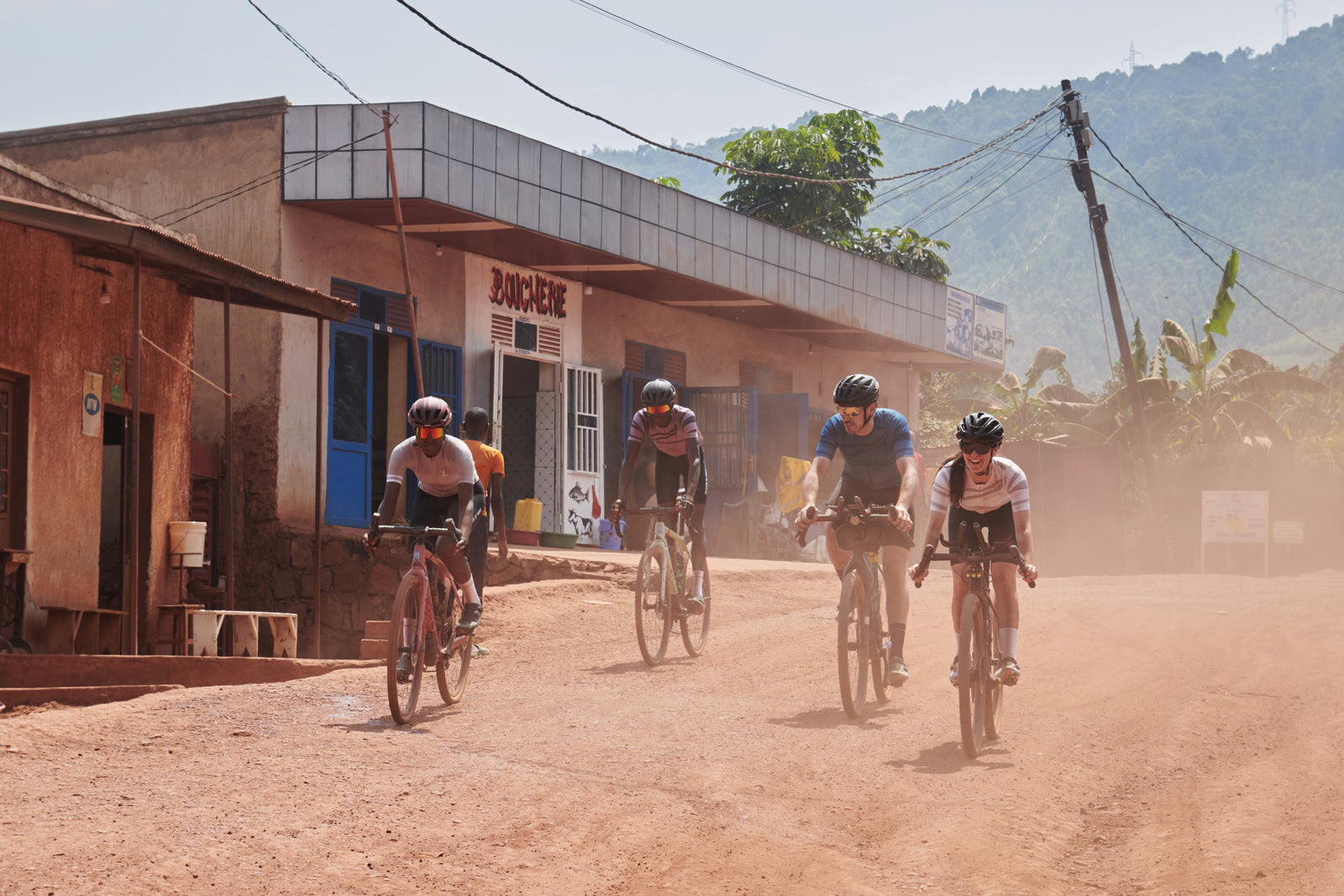
First stop: Oudenaarde. Through the foggy, chilly morning, we rode 20km to Oudenaarde, and the road became familiar.

Vince looked over and said "welcome to the finish of De Ronde." We got closer to see the VIP viewing building, the finish stage, and countless trucks to collect the parts as the big temporary structures get disassembled until next year.



We stopped at the base to collect ourselves, and then we were off for some hurt. I took the start way too hard, and by the top I was struggling to keep the pedals moving and the bike rolling forward.

Again, for having a race here the day before, the only remaining signs of anything special here the day before were the metal fences along the route, and a few neatly-tied black bags of trash that had been cleaned up and was now waiting on the side of the road for the collection crew.

Third stop: Paterberg. Another climb known famously for making and breaking some of the world's best cyclists, the Paterberg makes up in steepness what it lacks in length. The Paterberg is a short climb and relatively new in the 100+ year history of De Ronde. In 1984, a farmer, jealous of his friend who lived on the Koppenberg, paved one of his farm roads with cobbles just so the race would come by the house. It is now one of the critical climbs of the race, where a lone leader maintaining his gap over the top usually means victory as he descends into Oudenaarde. Again at the top I took a look around. Had it not been for a few more fences and a metal tower for the TV camera, it would seem like any other Monday.

Final stop: Oude Kwaremont. As we approach it, I can see the big white tents of the VIP viewing areas. The inverse of the Paterberg, Oude Kwaremont is less steep, but long. The grade starts on a paved road, evolves into a steeper cobbled climb, then by the top becomes "false-flat" gradient while still dealing with the rattle of Flemish cobbles. Despite it's name, it is actually a climb only used from 1974 onward, after the parallel climb, known as Kwaremont, was paved over for regular road traffic. It is easily one of my favorite climbs of De Ronde; where the gradient is long, but rhythmic. The fanfare is just amazing as the riders will pass the climb multiple times throughout the race, and the length usually helps create the selection, with its length creating massive gaps between groups of riders over the top.
Here we began to see some sign of a party. The sides of the road were covered in litter from beer cups to little Flemish flags. The local scouts group of kids were out with bags and sticks, cleaning up litter from the side of the road, and the area around.

Each VIP booth (of which there are multiple on Kwaremont) was deserted, but still had yet to be taken down. Most of the climb still had the metal fencing along the sides, and in the little village halfway up, a whole fleet of trucks and vans was at the ready to begin disassembly.

After our morning in Flanders, it became obvious as to why the focus shifts away so quickly. We saw a few riders doing the course the day after, and the cleanup crews were busy, but nothing special was left. Life would return to normal the rest of the year... But as Vince said that day: "Only 364 days left till De Ronde!"







Jitse
April 10, 2019
Neat little adventure!